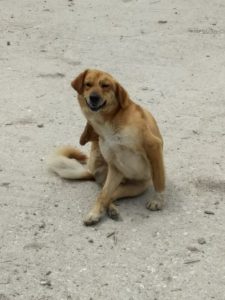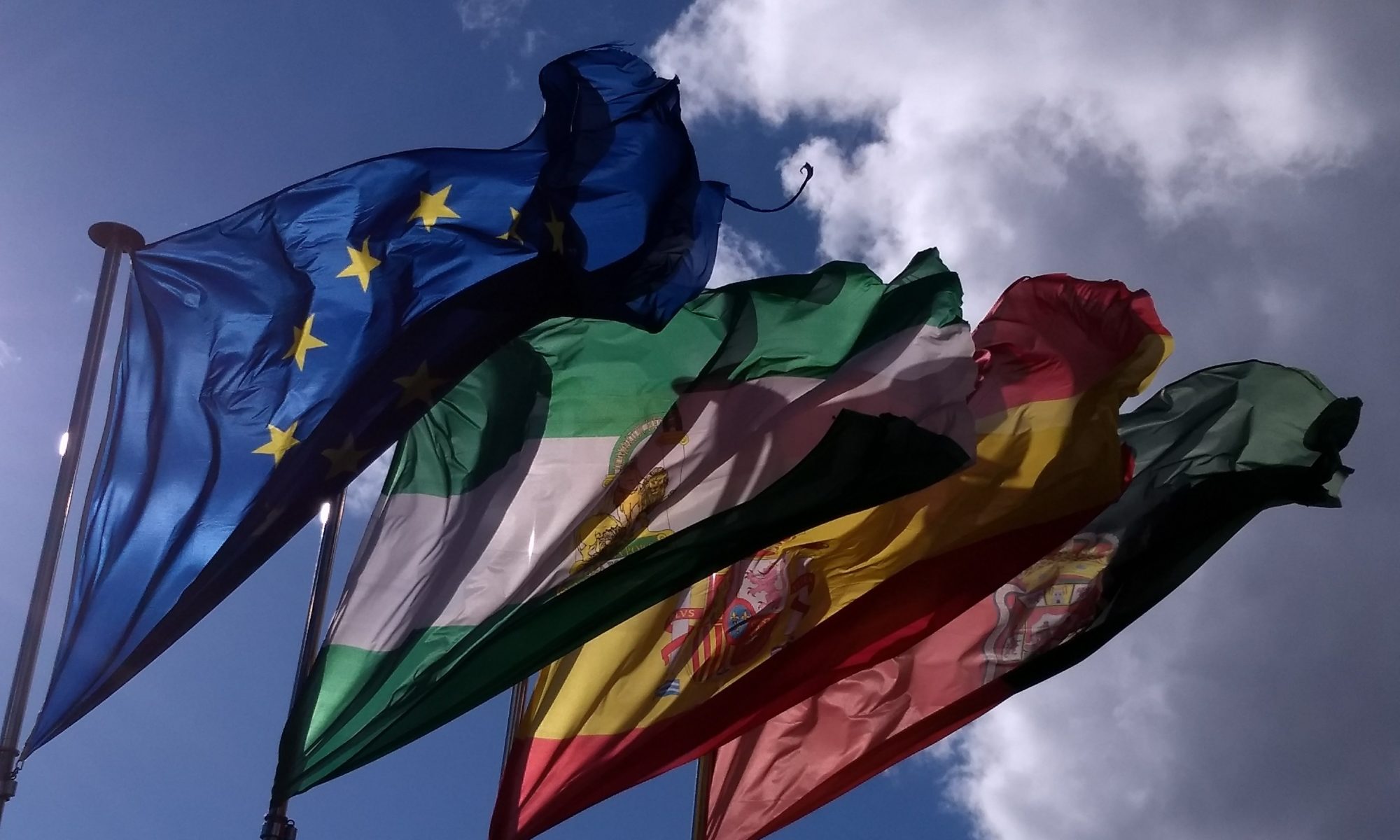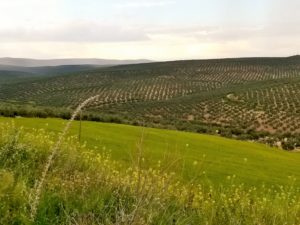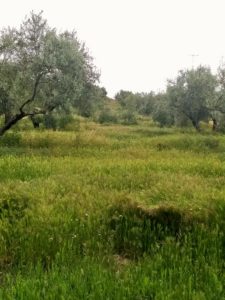Ein Viertel der weltweiten Olivenölproduktion stammt aus der Provinz Jaén. Dieses Plakat hier ist also weder ein Druckfehler, noch „Fake News“, sondern bereits überholt – inzwischen liegt die Zahl der Bäume bei 66 Mio. El Mar de Olivos. Wohin wir auch sehen, sehen wir Haine und Plantagen. Eine davon besuchen wir und lassen uns von dessen Besitzer herumführen.
A quarter of the worldwide olive oil production comes from the Andalusian province of Jaén. So this poster is neither a misprint, nor Fake News, it is simply not up to date – currently the number of olive trees in Jaén is about 66 million. El Mar de Olivos. Wherever we look, the rows reach the horizon as every usable piece of land is taken up by olive plantations. We visit one of them and let the owner show us around.
Juan Molina Martínez holt uns an der örtlichen Tankstelle ab und fährt uns durch seinen „Cortijo Spiritu Santo“ zur Produktionsstätte, die Almazara, in Ubeda/Jaén. Ein passionierter, ökologisch arbeitender Olivenbauer, auf dessen Olivengrund nebst den freundlichen Wach-Hunden „Po“ und „Calcetines“ auch 15 frei lebende Pferde und Esel für die Unkraut- und Grasvertilgung sowie die Düngung der Bäume sorgen, erklärt uns Bemerkenswertes: Die Bäume werde in Gruppen von 3 Stämmen angepflanzt, um das Risiko eines Absterbens zu minimieren. Olivenöl wird en gros nach Gewicht (Kilogramm) und nicht Volumen (Liter) verkauft. Verträge werden per Handschlag abgeschlossen und die Preise auch 16 Jahre nach Einführung des Euro in Pesetas angegeben.
Juan Molina Martínez meets us at the local gas station and drives us through his „Cortijo Spiritu Santo“ and to the olive oil mill, the Almazara, in Úbeda/Jaén. A passionate olivegrower that has retaken the traditional way of growing olive trees and where the two very friendly guard dogs „Po“ and „Calcetines“ are joined by 15 horses and donkeys that roam freely between the trees and take care of weeding and fertilizing the fields. He tells us interesting details, the trees are planted in clusters of three to have some „backup“ if one of the trunks should die, wholesale olive oil is sold by weight (kilos) and not by volume (litres) and the prices are still written up in Pesetas, sixteen years after the introduction of the Euro. Deals are signed with a handshake.


Ein 1000-jähriger Olivenbaum ist noch jung und kann Trockenperioden gut aushalten. Traditionell wird nicht bewässert (Secano), Juan hat jedoch die Erfahrung gemacht, dass eine kleine, regelmässige Bewässerung die Ernte in Menge und Qualität stark verbessert.
A 1000 year old olive tree is still „young“ and able to survive long periods of drought. Traditionally the trees are not irrigated and only get the sparse rainwater, but Juan’s experience has been that a small, regular watering boosts the quality and quantity of the crop.
Presse und Filteranlage werden uns gezeigt und erklärt, wobei bei der Produktion der Zeitraum zwischen Baum und Presse möglichst kurz gehalten wird. Die Degustation von 2 verschiedenen Olivenölsorten und das Kosten eines „schlechten“ Öls sind aufschlussreich. Zum Schluss fordert uns Juan auf, ein Stück schwarze Schokolade in den Mund zu nehmen und wie gewohnt zu essen. Zum zweiten Stück nehmen wir einen kleinen Schluck eines „Picual“-Öls – den Gaumen freut es, den Hals kitzelt es leicht. Köstlich. Und hübsche Mitbringsel gibt das auch…
We get to see the oil mill/presses and the filter systems, Juan aims to keep the time between harvesting and pressing as short as possible. We do a tasting of two varieties of olive oil, Picual and Arbquino plus a „bad“ kind of oil, very revealing. As a closing test, we are asked to put a small piece of dark chocolate in our mouth and then add a small sip of Picual and let it all melt together. We love it, it glides smoothly over our tongues and leaves a pleasant scratching note in the back of the throat. Delicious. And we take some souvenirs with us…





